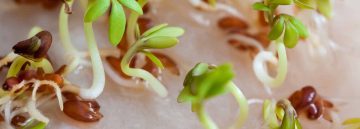Indicator species are also sometimes known as Soil Indicators. They are so characteristic of certain types of soil condition – either soil type or pH – that their simple presence can be used as an important clue as to the nature of the soil.
It is more difficult to use soil indicators in an established, well-maintained garden, but even there, the sorts of weeds and problems the gardener reports can give some important clues as to soil type.
Rhododendrons and azaleas, for example, will thrive in acid soil but look sickly and yellowing in alkaline soils. Similarly, many forms of Viburnum prefer chalky, alkaline conditions.
common soil indicators
Viburnum – chalky, alkaline soil
Heather – dry, acid or peaty soil
Nettle, chickweed – potentially fertile soil
Catnip (catmint) – chalky or alkaline soil
Sheep’s sorrel – poor, light, dry, acid soil
Foxglove – dry, sandy or gravely soil
Wild strawberry – dry, stony soil
Gorse or broom – poor, infertile soil
Coltsfoot – damp, clay soil
Wild thyme – dry soil
Common butterwort, lesser spearwort – wet, fertile soil
Goldenrod – wet sand

